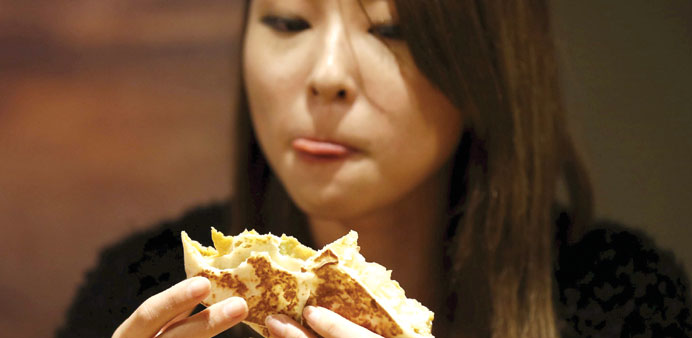By Jonas Schoell/Berlin/DPA
The egg of the future may have had little to do with a hen, and meat cutlets may be grown in a test tube, if German dietary experts and future-gazers are to be believed.
“Whether or not we like the idea, in 10 years’ time the world will be producing considerably more industrial food than today,” according to futurologist Sven Gabor Janszky, head of the Leipzig-based forecasting institute 2b Ahead.
“Chocolate will come out of the printer, and cultured meat will become the new normal,” he predicts.
UN predictions are for the world’s population to reach 9bn by 2050, with an increasing number demanding meat on the table. Future-gazers like Janszky see the solution in technology and put forward a range of ideas:
FOOD OFF THE PRINTER: “Please turn on the printer, dear,” could be the signal to send a message with your smart phone to programme a meal for printing out later. Work is proceeding around the world to make food with a 3D printer. Janszky predicts this will be a reality in advanced countries in five to 10 years. Italian food company Barilla aims to sell appliances to restaurants that produce pasta shapes to order. Nutritionist Hanni Ruetzler sees a similar future, although it remains to be seen whether everyone having their own home printer makes sense.
HENLESS EGGS: The egg of the future would not have to be laid by a fowl, says communications expert Christian Schindler, who blogs on the food of the future. Powder made of milled beans, peas and millet could replace egg, particularly in ready-made products, such as mayonnaise, noodles, cakes and scrambled egg. “The US egg lobby has praised young food creators, saying vegetable egg could soon be cheaper than the real thing,” Schindler says. Plants produce fewer greenhouse gases, need less water and reduce animal suffering.
MEAT OUT OF THE TEST TUBE: In 2013, Dutch scientists produced a meatball from animal stem cells, with the aim of meeting the rising demand for meat. Commercial production is to start in 10 or 20 years. “Artificially produced meat that looks and tastes like the real thing will be the cheap and climate-friendly alternative,” Janszky says. But Christian Fronczak of the German food and agriculture ministry notes that “consumers regard laboratory meat with scepticism”.
TECHNOLOGY: In the future, electronic devices will tell users what they should be eating, assessing what the body needs and ordering the appropriate ingredients, Janszky says. Kitchen appliances will also become smarter, like the Smart Knife being developed by Sweden’s Electrolux, which indicates freshness and the presence of nutrients when cutting fruit, for example.
FUNCTIONAL FOOD: Food should be healthier, more attractive and boost performance, according to this view. “Every major food company is investing in this behind the scenes,” says Janszky. He believes that there will, for example, be yoghurt guaranteeing increased performance and drinks that promise greater creativity. But Ruetzler disagrees here. “Food is not just fuel, not medicine. We eat primarily to enjoy,” she says. High performance foods neglect this aspect.
MEAT-FREE: “The trend is to vegetarian and vegan lifestyles,” Ruetzler says, with a range of alternatives to meat, including tofu, seitan and soon products made from lupins. And Schindler sees both start-up and established companies working to “get taste into these substitutes”. For example, the start-up company Beyond Meat is already offering a meatless Beast Burger. And a German firm now has vegetarian sausage, including a mortadella, on offer. “Nevertheless, we won’t become vegetarians full-time, but feed ourselves in a more diverse and low-meat way,” Ruetzler says.
INSECTS: The UN’s Food and Agriculture Organisation advises the use of insects as food. Locusts are rich in vitamins, minerals and trace elements. Ruetzler believes that insects as food will remain a niche market in Europe “processed into flour and included invisibly as high-protein component in bread or meatballs”.
German farm plans to sell camel’s milk
A camel farm in the northern German state of Lower Saxony announced yesterday that it would be the first company nationwide to sell camel’s milk. “We started the milking a couple of weeks ago,” farmer Andreas Marquard told DPA at his farm in the village of Hiddingen. Marquard said he has submitted his application for a licence to sell the milk, but he does not expect it to be issued for at least a year. The milk will be deep-frozen and delivered to customers, he added.
The taste of camel’s milk is similar to unpasteurised cow’s milk, Marquard said. He said he had received requests to buy the milk mostly from people suffering from atopic eczema and allergies. A private camel owners’ club said that there is no other business in Germany that is offering camel’s milk for sale.



